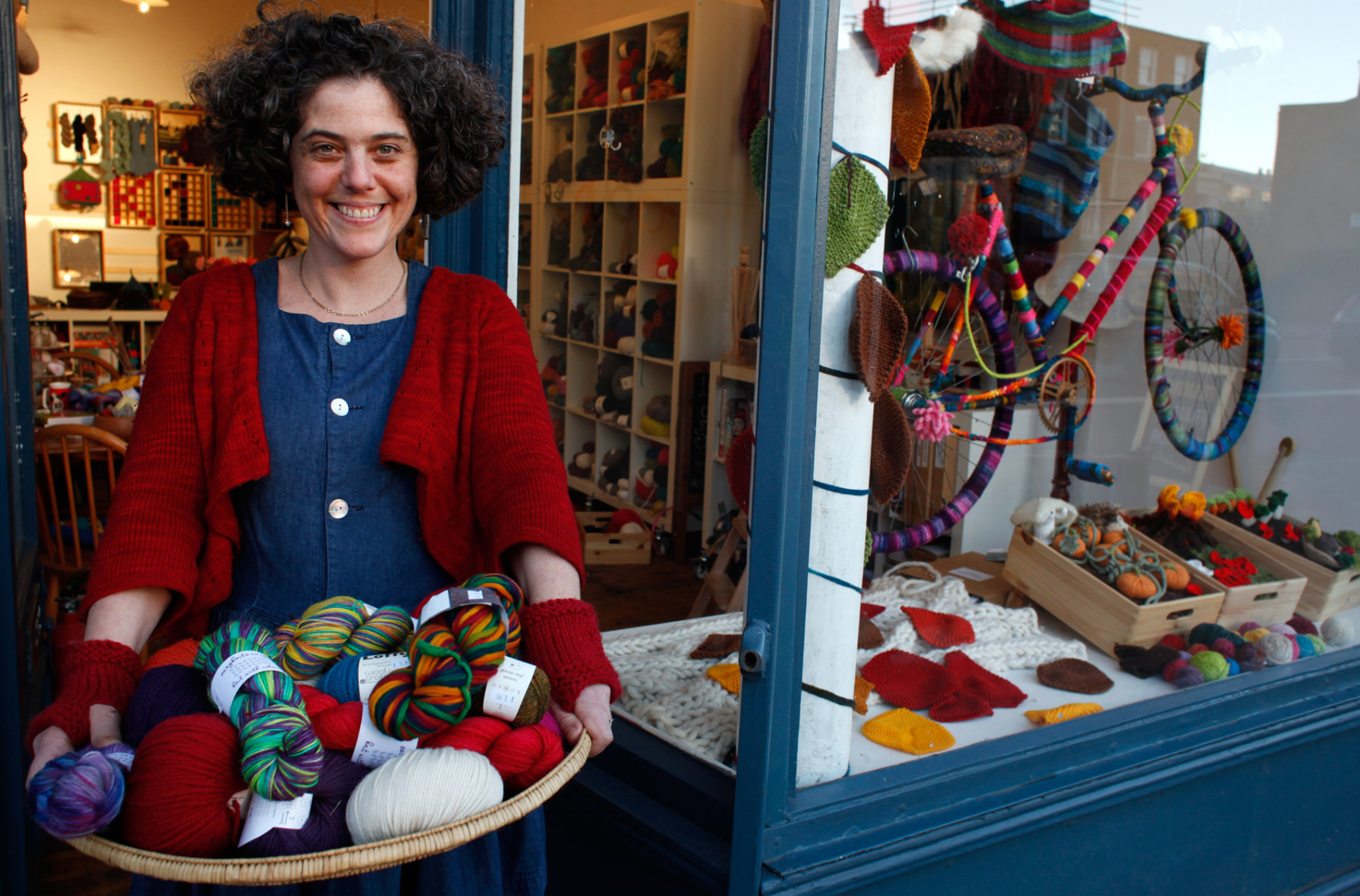We used to keep a pile of mending when I was a child, for my granny to do when she came to visit. It was a mixture of ripped and knee-worn jeans, holey elbowed sweaters, socks and tights where the toes poked through, accidentally torn shirts and so on. My granny sat in good light with my mum’s well equipped sewing drawer of darning mushrooms, mending threads and saved bits of fabric from shortened dresses and trousers (we are a family of shorties), and she would make good our bad, from time to time offering unsolicited advice about how to stop the holes happening in the first place (we are also a family of purveyors of unsolicited advice). Her work was thoughful and meticulous – she would consider the most hardwearing solution to the hole so that the patch would endure and then go about making it as invisible as possible. But it was rarely without judgement. She had a way of pursing her lips and raising her eyebrows at the same time which told you exactly what she thought about the state we’d let our clothes get into.
There was something about getting the mended clothes back again which felt a bit like having them anew, for Granny’s mending was reassuringly robust and proper. The former was real for her work was very good and strong. The latter was just a truth I somehow grew up with which held that the way she did things was proper by virtue of her being the one that did it.
But my understanding here could sometimes lack nuance. I remember as a young teenager deliberately choosing to wear a pair of mended trousers when I was invited to granny’s house for tea with Aunty Thea, my stylish and immaculately dressed, kohl-eyebrowed great aunt. Thea had a stern Prussian correctness about her, that called for tea in good china and probably a table cloth too. I chose to wear the trousers with the mended rip precisely because they’d been made proper again by my granny.
“Thea comes for tea and you have to wear the trousers with the hole?!!” she declared incredulously when I walked in.
“But you mended them granny!” I cried defensively. “There isn’t a hole anymore.”
I had plainly and clumsily misunderstood what mended trousers meant in the socially baffling context of granny’s highly strung tea with her elegant sister-in-law.
The meaning of mending is now the subject of a wonderfully imaginative exhibition of socks mended by the textiles artist and celebrated darner, Celia Pym, at the Now Gallery in Greenwich.

Pym says of mending..
“I make it visible because I want to see the relationship between what happened to the thing and this feeling that the garment, and by extension the person, has been looked after.
“The act of mending is about zero-ing in on something that matters to you… It can be very ordinary wear and tear but it’s evidence of what people do in their life.”
My granny repaired our clothes as it self evidently gave them a way to go on being worn for a lot longer to come, and avoided the need to unecessarily replace them. It was an act of care and in spite of her pursed lips, I think it was also an act of love for us. There was an intimacy and familialness to it – made all the more pronounced because of the social absurdities of her time which held that repairs were unsightly and should be hidden. We shared our worn-outnesses with her and she worked on them to make them good again.
As I wandered amongs the very visibly mended socks of Pym’s exhibition, I couldn’t help thinking about what my granny would have made of it. She would definitely have appreciated and admired the time and skill that went into the stitch work and patching. I hope she would also have seen – as everyone who visits the exhibition sees – the new and additional beauty and meaning that is added through mending and repair.
Celia Pym’s Socks: The Art of Care and Repair will be on display at the Now Gallery in Greenwich until 30 March 2025.


